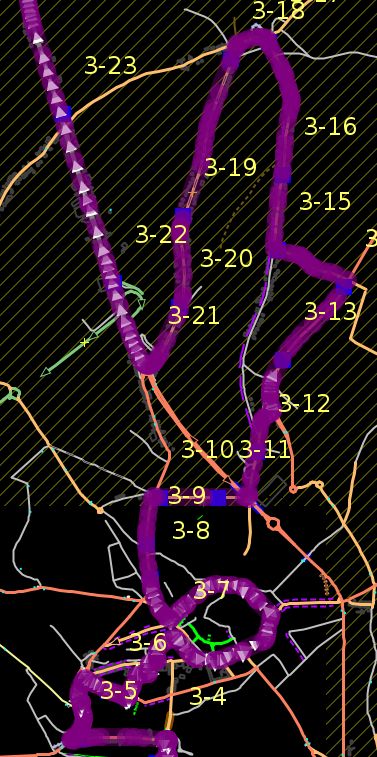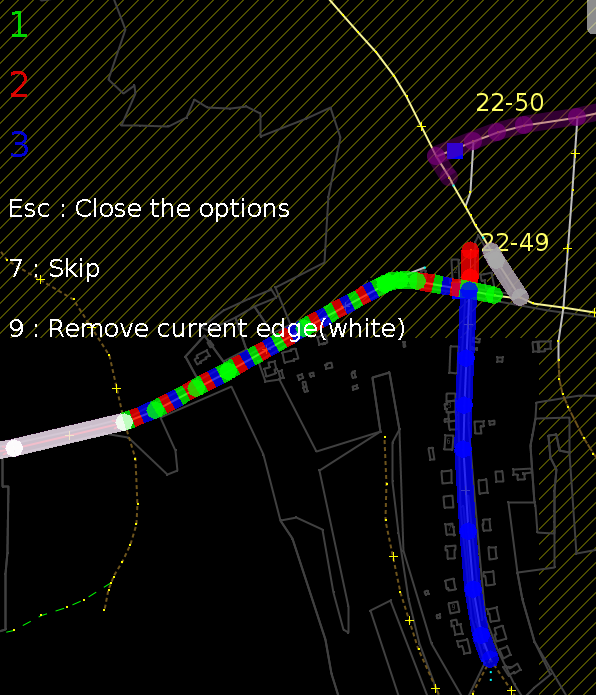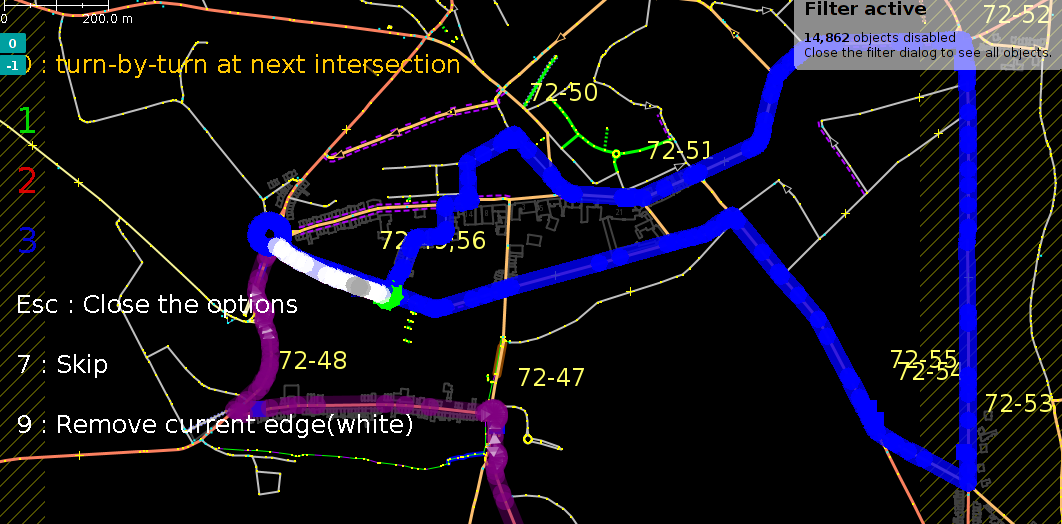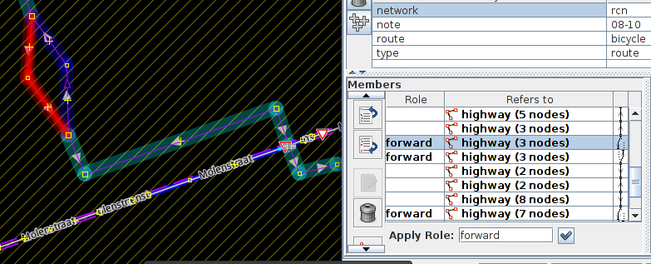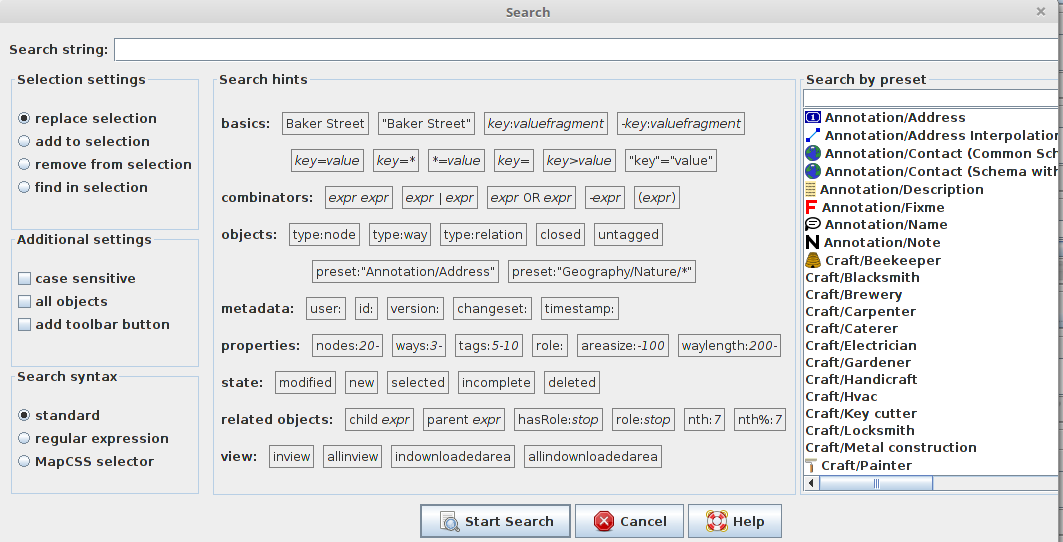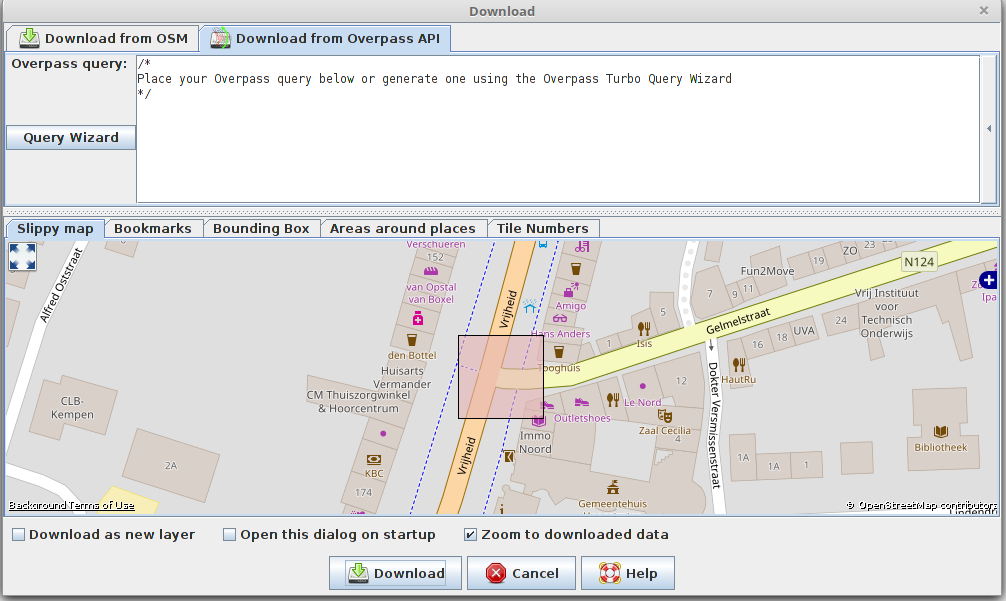Cycling highways are a ‘thing’ in Belgium and The Netherlands, or rather, they will be.

Some stretches already exist, others are still in the planning phase.
The intent is to have them as bidirectional ways for cyclists, ideally 4m wide, without car traffic. Often alongside railroads or canals, sometimes instead of disused railways. Where they cross motorways bridges are planned.
Usually they are also open to pedestrians, horseback riders, skeelers, etc. Some were not open to speed_pedelecs, but that is getting resolved.
In practice there will be certain parts that will always be ‘shared’ with car traffic though and where they cross busy national roads the cyclists won’t have priority for obvious reasons. Building bridges and tunnels everywhere is not possible either.
So more than half of them are still in the planning stage. On OpenStreetMap I like the ability to show where they are planned.
I also like to show what the alternative is that can be used today. Obviously we want to avoid unpaved, cobble_stone/sett and even cycle ways along busy car highways. But often that is simply not possible. Things will improve, but it’s going to take time.
I made the mistake of trying to map each cycle highway from beginning to end with a single route relation. It became apparent that that simply does not work.
I also like the route relations to be a continues stream of ways.
So, I came up with the idea of using superroute relations, after asking the JOSM developers to enable showing continuity across ‘sub-routerelations’. They implemented it for superroute relations. (Big thank you!)
It’s a lot of work, but now we are able to show which parts are already usable, which parts are proposed and how to ride today to bypass the stretches that aren’t realised yet.
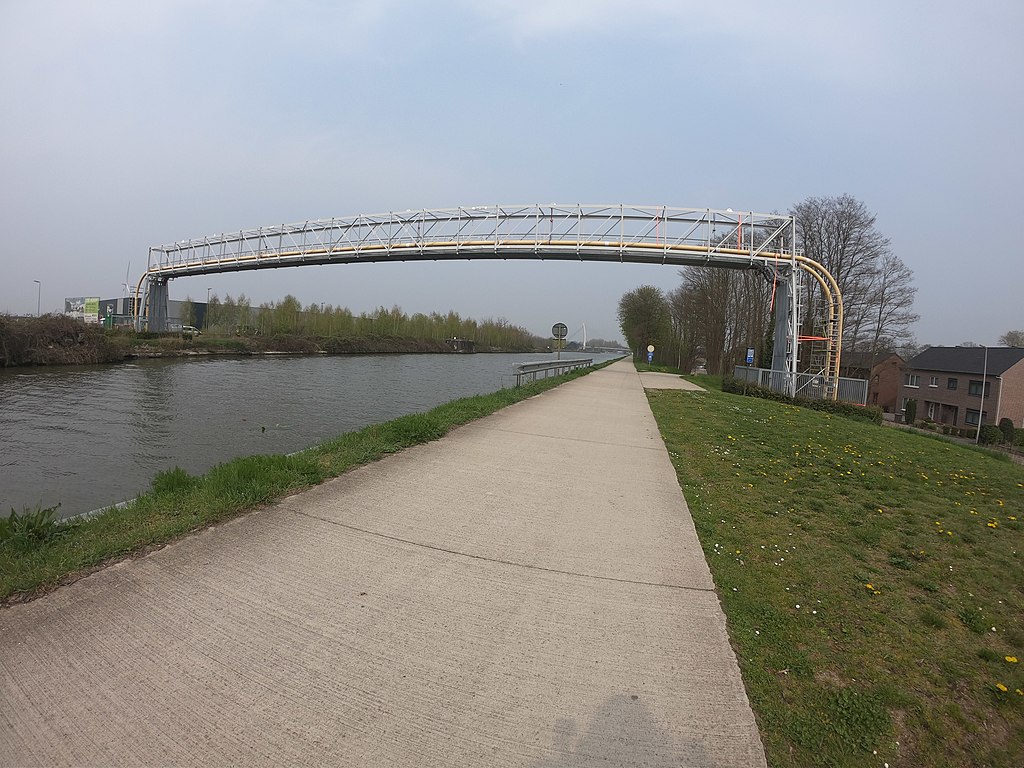
I will use F78 as an example. It follows Zuid-Willemsvaart for 55 km from somewhere north of Maastricht to Pelt (formerly Neerpelt/Overpelt). For 32 km it’s a rather dull ride along the canal. Near Tongerlo/Bree things get more complex. Currenty there is a steep staircase of 15m after riders pass a smelly water treatment facility.

(The whole ride is on Mapillary. My task was to follow the planned trajectory as closely as possible, so what I propose through Tongerlo is currently missing on Mapillary. It’s not easy to get there - no train stations in that heck of the woods - so it might take a while before I get a chance to go back)
The plan is to create a more bicycle friendly connection at that point, but it’s simply not there yet. So I propose to ride through the center of Tongerlo as an alternative that can be used today. (It might even be a better alternative long term, but that’s another discussion)
First stretch: https://www.openstreetmap.org/relation/11479950#map=12/51.1289/5.6518&layers=C
Planned trajectory: https://www.openstreetmap.org/relation/11479949/history#map=13/51.1403/5.6390&layers=C
Tagged with state=proposed on the route relation, which makes it display dashed on the cycle map and route planners won’t use it.
Alternative: https://www.openstreetmap.org/relation/11479948/history
The last stretch: https://www.openstreetmap.org/relation/11479947#map=12/51.1914/5.5536
Most cycling highways are not as monotonous as this one. Often it’s a combination of dedicated infrastructure combined with mixed traffic. The plan is for those to become cycle_streets, where cars are not allowed to bypass cyclists and where the maximum speed is 30km/h. Of course speed pedelecs can’t ride 45km/h there either.
So I’m using 2 superroute relations and 4 route relations to describe what is already realised, what is planned and what is the alternative. For most other cycling highways it means a lot more route relations. Flexibility comes at a price.
One could argue that the unrealised stretches shouldn’t be on OpenStreetMap yet. I beg to differ. I think they are interesting enough to map. They will be realised, either soon, or no so soon. Work in progress.
If anyone is interested in how I’m converting the single route relations to 2 superroute relations and many a route relation, I’m always willing to do a Google Hangout or Skype conversation about it. Polyglot

